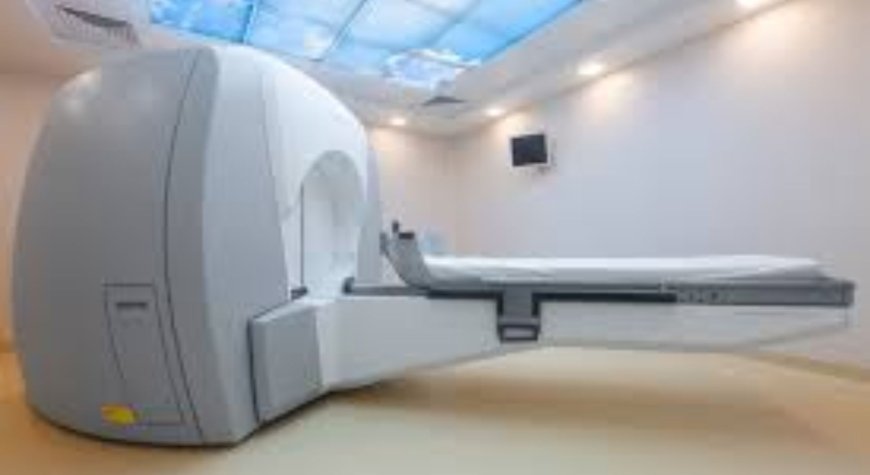What Is Gamma Knife Radiosurgery? A Comprehensive Guide for Patients
Explore how Gamma Knife Radiosurgery offers a precise, non-invasive treatment for brain conditions. Learn about the procedure, benefits, recovery, and its growing availability in India.

In recent years, Gamma Knife Radiosurgery in India has become an increasingly sought-after treatment option for individuals dealing with complex brain and neurological conditions. Thanks to advancements in medical technology, India now offers this highly specialized, non-invasive procedure at leading hospitals, making it accessible and affordable for both local and international patients. But what exactly is Gamma Knife Radiosurgery, and who can benefit from it? This guide breaks it down for you in simple terms.
What Is Gamma Knife Radiosurgery?
Despite its name, Gamma Knife Radiosurgery is not a surgical procedure in the traditional sense. There are no scalpels or incisions involved. Instead, it is a highly focused form of radiation therapy used to treat abnormalities, tumors, and functional disorders in the brain. The procedure uses multiple beams of gamma radiation to precisely target diseased tissue without harming the surrounding healthy brain structures.
Gamma Knife is often used to treat:
-
Brain tumors (both cancerous and benign)
-
Arteriovenous malformations (AVMs)
-
Trigeminal neuralgia (chronic facial pain)
-
Acoustic neuromas
-
Pituitary tumors
-
Metastatic brain tumors
-
Certain types of epilepsy and tremors
Its a safe and effective alternative for patients who are not candidates for traditional brain surgery or who prefer a less invasive option with shorter recovery times.
How Does It Work?
The technology behind Gamma Knife Radiosurgery is incredibly precise. During the procedure, a patients head is either stabilized with a lightweight frame or a custom-fitted mask to ensure pinpoint accuracy. Advanced imaging techniques like MRI or CT scans are used to locate the exact position of the target within the brain.
The treatment itself involves directing up to 200 tiny beams of gamma radiation at the target. Each beam is relatively weak on its own and passes harmlessly through healthy tissue. But where all the beams convergeon the tumor or abnormalitythe radiation is strong enough to disrupt the DNA of the cells, stopping them from growing or causing symptoms.
Treatment typically lasts from 30 minutes to a few hours, depending on the condition being treated. Most patients can return home the same day.
Advantages of Gamma Knife Radiosurgery
There are several reasons why Gamma Knife is considered a breakthrough in neurological care:
-
Non-invasive: No cuts, stitches, or general anesthesia required.
-
High precision: Targets the lesion with millimeter accuracy.
-
Minimal recovery time: Most patients resume normal activities within a day or two.
-
Outpatient procedure: No lengthy hospital stays.
-
Safe and effective: Proven success in treating complex brain conditions with fewer complications.
These advantages make it an ideal choice for patients who want to avoid the risks and downtime associated with open brain surgery.
What to Expect During and After Treatment
Before the procedure, youll undergo imaging scans and a treatment planning session. On the day of the treatment, expect the following steps:
-
Head stabilization with a frame or mask.
-
Imaging (MRI or CT) to pinpoint the target.
-
Radiation dose planning by a multidisciplinary team.
-
Actual treatment, during which youll lie on a table while the machine delivers radiation.
You wont feel the radiation during the procedure. Some patients may experience minor side effects afterward, such as fatigue, headache, or scalp irritation, but these are usually short-lived.
Recovery is typically swift. Patients are often discharged the same day and can return to normal routines within 2448 hours. Follow-up imaging is scheduled to monitor treatment effectiveness over time.
Cost and Accessibility of Gamma Knife Radiosurgery in India
India has rapidly become a global destination for advanced medical treatments, and Gamma Knife Radiosurgery is no exception. The procedure is available in top-tier hospitals across cities like Delhi, Mumbai, Chennai, Bengaluru, and Hyderabad. These hospitals are equipped with state-of-the-art technology and led by internationally trained neurosurgeons and radiologists.
Cost is one of the major advantages. While Gamma Knife procedures can cost upwards of $25,000$50,000 in Western countries, Gamma Knife Radiosurgery in India is typically priced between ?2.5 lakh and ?5 lakh (roughly $3,000$6,000), depending on the hospital and condition being treated. This cost often includes consultation, imaging, the procedure itself, and follow-up care, making it a cost-effective solution for patients from around the world.
Is Gamma Knife Right for You?
Gamma Knife Radiosurgery isnt suitable for all brain conditions, but it is a game-changer for many. If youve been diagnosed with a brain tumor, vascular malformation, or a neurological disorder like trigeminal neuralgia, you may be a candidate for this treatment. Always consult with a qualified neurosurgeon or radiation oncologist who can assess your condition and recommend the most appropriate treatment plan.
Final Thoughts
Gamma Knife Radiosurgery represents a major leap forward in the non-invasive treatment of brain disorders. With minimal downtime, high precision, and excellent outcomes, it's no surprise that more patients are considering this advanced therapy. Thanks to the availability of skilled specialists and world-class facilities, Gamma Knife Radiosurgery in India offers hope and healing to patients seeking effective, affordable care.























